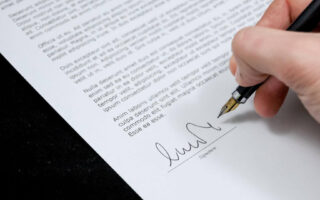When it comes to getting the job you want, your resume is your most important tool. With so much competition for the same job, crafting an irresistible resume that stands out to employers is essential. But what exactly do employers look for when reviewing a resume? You won’t believe the key elements employers are interested in seeing on your resume! Read on to find out how to create a resume that will get noticed and increase your chances of landing that dream job.
1. “The Unbelievable Truth About Resume Writing”
Are you ready for the shocking truth about resume writing? Brace yourself, because it’s about to blow your mind! The unbelievable truth is that your resume is not just a piece of paper – it’s a secret weapon in your job search arsenal.
You see, while most people think that a resume is just a formality, employers actually use it as a crystal ball to predict your future success. That’s right, your resume is like a crystal ball! It holds the power to determine whether you get invited to a job interview or left in the dust.
So, how can you harness this magical power? It’s simple: by crafting a resume that tells a compelling story. Think of it as a fairy tale – but instead of dragons and princesses, you have your skills and experiences.
But wait, there’s more! The secret ingredient to a killer resume is customization. Just like a chef tailors their dish to suit the tastes of their guests, you need to tailor your resume to fit the job description. This shows employers that you’ve done your homework and are serious about the role.
So, forget what you thought you knew about resume writing. The truth is out there, and it’s unbelievable! Get ready to unlock the hidden potential of your resume and watch as it catapults you to success in your job search. Trust me, employers won’t know what hit them!
2. “Decoding Job Descriptions for Key Skills”
Picture this: you’re browsing through job postings, hoping to find the perfect opportunity. You come across a job description that sounds like it was written in a foreign language. They’re asking for skills you’ve never even heard of, let alone possess. It’s like deciphering an ancient code!
But fear not, brave job seeker! Decoding job descriptions for key skills is a skill in itself. It’s like being a detective, searching for clues and piecing together the puzzle. So, how can you crack the code and find out what skills employers are really looking for?
First, read between the lines. Employers often use fancy jargon to describe simple skills. For example, when they say “strong interpersonal skills,” they really mean you should be able to have a conversation without making awkward small talk. See? Easy peasy!
Next, look for the keywords. Employers love to throw in a bunch of buzzwords to make themselves sound important. But don’t let that intimidate you! Just focus on the words that keep popping up, like “teamwork” or “problem-solving.” Those are the skills they’re truly interested in.
And finally, don’t be afraid to ask questions. If you’re not sure what a particular skill means, do some research or reach out to someone in the industry. Remember, the job search is like a treasure hunt, and knowledge is your greatest weapon.
So, put on your detective hat and start decoding those job descriptions. Once you crack the code, you’ll be one step closer to landing that elusive job interview. Good luck, my fellow job seekers! May the decoding skills be with you!
3. “Show, Don’t Tell: Tips for Highlighting Accomplishments”
Now that you’ve mastered the art of decoding job descriptions and showcasing your key skills, it’s time to move on to the next step: highlighting your accomplishments. But here’s the thing – simply listing your accomplishments on your resume won’t cut it. You need to show, not tell.
Think of it like a magic trick. Instead of just saying, “I’m an amazing problem solver,” you need to make that problem-solving ability come alive on your resume. Paint a picture with words that makes employers go, “Wow, this person is the real deal!”
One way to do this is by using action verbs. Instead of saying, “Responsible for increasing sales,” say, “Generated a 25% increase in sales within the first quarter.” See the difference? It’s like going from a basic card trick to a mind-blowing illusion.
Another tip is to quantify your accomplishments whenever possible. Numbers have power! Instead of saying, “Managed a team,” say, “Successfully managed a team of 10 employees, resulting in a 20% improvement in productivity.” That’s the kind of accomplishment that will catch an employer’s attention and have them eagerly inviting you for a job interview.
So remember, when it comes to highlighting your accomplishments on your resume, show, don’t tell. Use action verbs, quantify your achievements, and let your resume dazzle employers with your undeniable skills and success. And who knows, you might just leave them so impressed that they skip the interview and hire you on the spot!
4. “The Power of Numbers and Quantifiable Results”
Numbers have power. No, I’m not talking about some mystical force that can levitate objects or predict the future. I’m talking about the power of numbers on your resume. You see, employers love quantifiable results. It’s like catnip for them. When they see numbers on your resume, their eyes light up, and they start imagining all the ways you could bring success to their company.
So, instead of saying, “I increased sales,” why not say, “I increased sales by 50% in just six months”? Instead of saying, “I improved efficiency,” say, “I reduced production time by 20%, saving the company thousands of dollars.” See the difference? Numbers add a whole new level of oomph to your accomplishments.
But don’t stop at just throwing in some random numbers. Make sure they’re meaningful and relevant to the job you’re applying for. If you’re a marketer, talk about how you increased website traffic by 200% or boosted social media engagement by 500%. If you’re in finance, mention how you saved the company $1 million through cost-cutting measures.
Numbers not only grab employers’ attention, but they also show that you’re results-oriented and have a track record of success. So, don’t be shy – flaunt those numbers on your resume and watch as employers flock to you like moths to a flame. Just make sure your resume doesn’t catch fire in the process.
5. “Standing Out with Creative Design Elements”
When it comes to standing out from the sea of generic resumes, a little creativity can go a long way. So why not jazz up your resume with some eye-catching design elements? Think of it as adding a sprinkle of glitter to an otherwise boring piece of paper.
But before you go all out and turn your resume into a work of art, there are a few things to consider. First, make sure your design choices align with the industry you’re applying to. While a graphic designer can get away with a resume that looks like a Jackson Pollock painting, a banker might not appreciate a resume that looks like a Picasso.
Next, keep it simple and clean. You want your design elements to enhance your resume, not overpower it. Use fonts that are easy to read and choose a color scheme that is professional yet attention-grabbing. Remember, you’re not designing a poster for a rock concert – you’re designing a resume.
Finally, don’t forget about the content. While design elements can help you stand out, they shouldn’t overshadow your skills and experience. Make sure your resume is still clear, concise, and easy to navigate. After all, you don’t want employers to get lost in a maze of funky fonts and flashy graphics.
So go ahead, let your creativity shine through. Add a splash of color, a unique layout, or even a subtle graphic. Just remember to keep it professional and make sure your design choices complement your qualifications. Who knows, your creatively designed resume might just be the spark that catches an employer’s eye and lands you that dream job. Now go forth and design, my friend!
6. “Words to Avoid: Clichés, Jargon, and Overused Buzzwords”
Let’s face it, we’ve all been guilty of using clichés, jargon, and overused buzzwords on our resumes. But here’s the truth: employers are tired of seeing the same old phrases that make their eyes glaze over. So, if you want to stand out from the crowd, it’s time to banish these tired expressions and get creative with your words.
Instead of saying you’re a “team player,” why not describe yourself as a “collaboration maestro”? Rather than claiming to have “excellent communication skills,” why not say you’re a “verbal virtuoso”? See how much more interesting that sounds?
But that’s not all. It’s time to ditch the jargon too. You don’t need to use fancy industry terms to impress employers. In fact, using jargon might make them think you’re just trying to sound smart. So, say goodbye to phrases like “synergistic optimization” and “cross-functional integration.” Instead, focus on clear and concise language that showcases your actual skills and experience.
And let’s not forget about those overused buzzwords that have lost all meaning. I’m looking at you, “dynamic,” “strategic,” and “results-driven.” It’s time to find new ways to express yourself. Show employers that you’re a creative problem-solver, a visionary leader, or a master of innovation.
So, in the battle against clichés, jargon, and overused buzzwords, remember to keep it fresh, keep it real, and let your unique personality shine through. Trust me, employers will appreciate the effort and be more likely to remember you among the sea of generic resumes. Good luck, my fellow word warriors!
7. “Tailoring Your Resume to the Job and Company”
So you’ve mastered the art of decoding job descriptions, showcasing your accomplishments, and dazzling employers with your creativity. But there’s one more crucial step in creating an irresistible resume – tailoring it to the job and company you’re applying to.
Now, I know what you’re thinking – why do I need to do extra work to customize my resume? Can’t I just send out the same one to every company? Well, my friend, let me tell you a little secret. Employers can sniff out a generic, one-size-fits-all resume from a mile away. And trust me, it won’t leave a good impression.
So, how do you tailor your resume? It’s all about catering to the specific needs and preferences of the company. Start by carefully reading the job description and picking out the key skills and qualifications they’re looking for. Then, make sure those skills and qualifications are prominently highlighted in your resume.
But it doesn’t stop there. You also need to research the company and understand its culture, values, and goals. Incorporate this knowledge into your resume by showcasing how your skills and experience align with what the company is looking for. This shows employers that you’ve done your homework and are genuinely interested in their organization.
Remember, a tailored resume is like a custom-made suit – it fits perfectly and makes you stand out in a crowd. So put in the extra effort, tailor your resume, and watch as employers take notice and invite you for that coveted job interview. You’ve got this!
8. “Proofreading Like a Pro: Catching Errors Before They Catch You”
Ah, the dreaded typo. We’ve all been there – submitting a resume only to realize moments later that we misspelled our own name. It’s enough to make you want to crawl under your desk and never emerge. But fear not, my friend! With a little proofreading magic, you can catch those errors before they catch you.
First things first, take a step back and give yourself some distance from your resume. When you’ve been staring at the same words for hours, it’s easy to miss even the most glaring mistakes. So, take a break, have a cup of coffee, and then come back with fresh eyes.
Next, read your resume out loud. Yes, I said out loud. Trust me, this is not the time for silent reading. When you read aloud, you’re more likely to catch those pesky typos and awkward sentences that just don’t flow. Plus, it gives you a chance to practice your dramatic reading skills – you never know when that might come in handy.
And finally, don’t rely solely on spell check. While spell check is a handy tool, it’s not foolproof. It won’t catch things like using “there” instead of “their” or “its” instead of “it’s.” So, give your resume a thorough once-over, checking for grammar, punctuation, and any other errors that might have slipped through the cracks.
Remember, proofreading is like playing hide-and-seek with mistakes. They’re hiding, and you need to seek them out. So, grab your magnifying glass, put on your detective hat, and get ready to hunt down those errors. Your flawless resume awaits!
Related Posts
Maximizing Your Earnings: The Art of Salary Negotiation
Nailed It! How to Crush Your Job Interview with Killer Preparation




[…] you’ve finally found the perfect job listing. You’ve updated your resume, double-checked your references, and now it’s time to tackle that cover letter. But […]
[…] You Won’t Believe What Employers Really Want to See on Your Resume […]